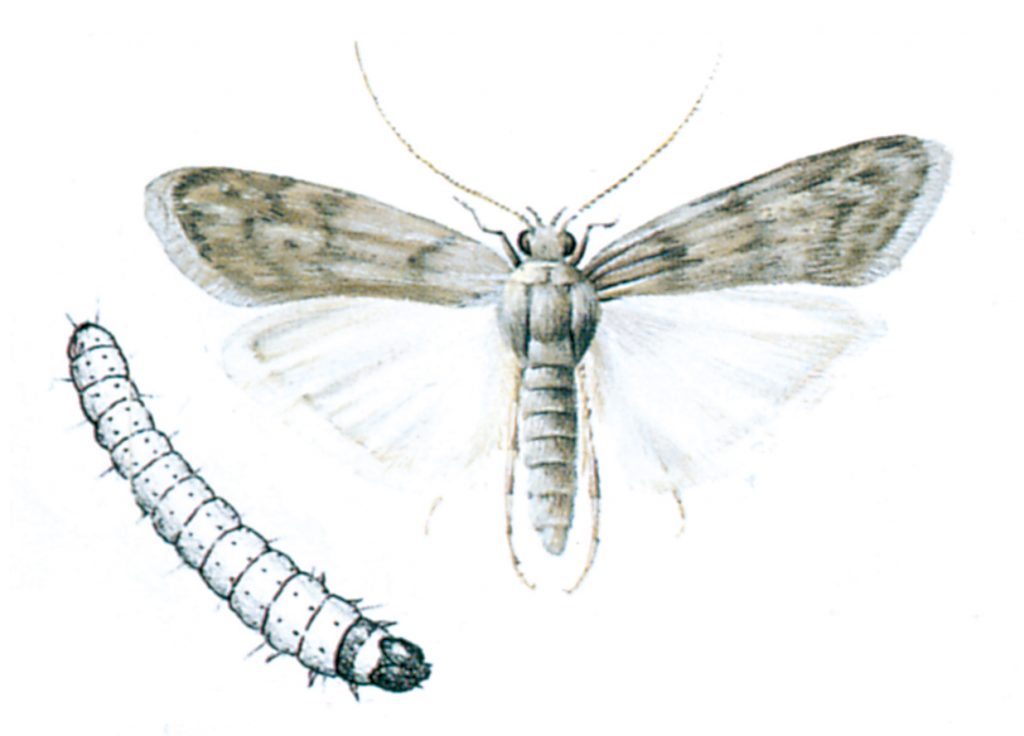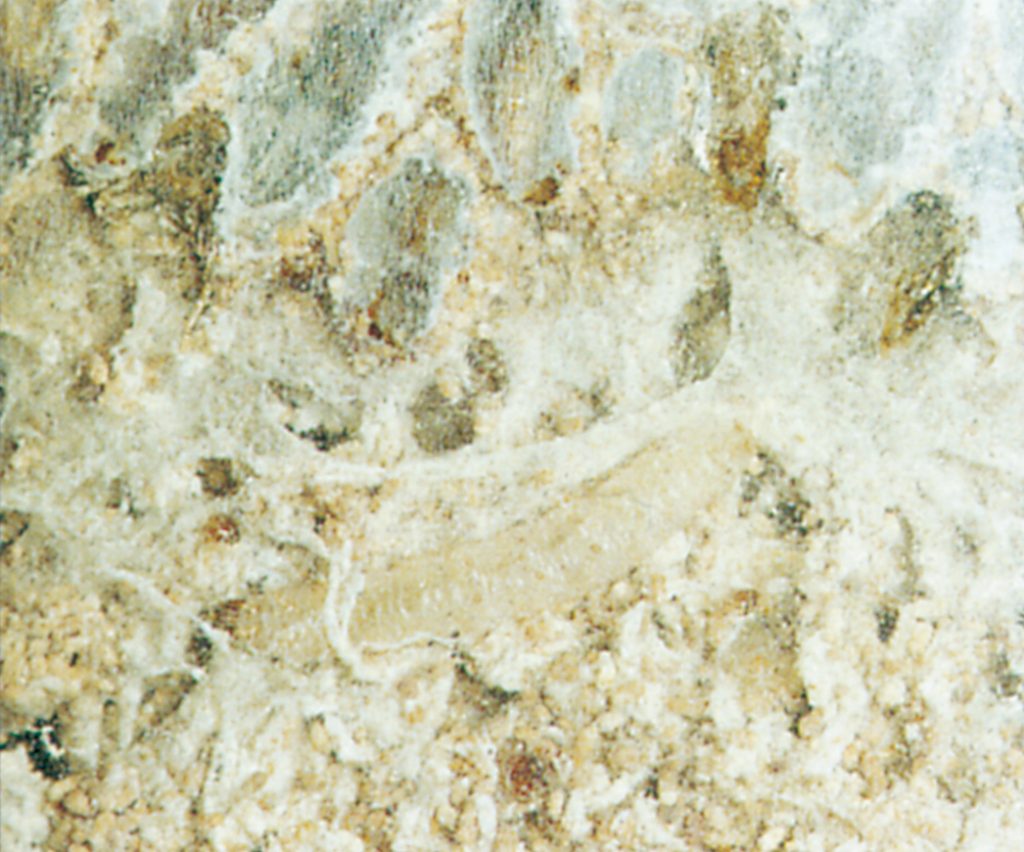( Latin: Ephestia kuehniella)

This moth came originally from India. It was first found in Europe in about 1877 in American wheat. Nowadays there are few concerns dealing with flour and cereals which do not suffer from time to time from the depredations of this kind of moth. It may also become a menace in private households.
The adult moths fly about at dusk, and the females each lay up to about 300 eggs in the flour. When the eggs hatch the larvae start to feed immediately. All the time they are spinning a sticky silken thread, which causes the meal to hang together in large clumps. It also acquires an unpleasant smell and a grey-brown colour due to the faeces.

The fully grown larvae move up to the surface of the flour and wander off to find a nearby crevice in which they can pupate. The pupa, which is 7 mm long, is completely enclosed in a thick, white silken cocoon.
The adult moths emerge from the hiding places after 2-3 weeks.
Mill moth larvae prefer wheat flour, but will also feed on all sorts of grains, cereals, seeds, macaroni, dried fruits, cocoa, nuts and almonds.
In mills the silken threads may cause a blockage of piping, funnels and sieves, so that the process has to be stopped for a thorough cleansing and possibly gassing.
In the house it will normally be sufficient to discard the tainted goods, but it is as well to remember that larvae ready to pupate will have hidden themselves nearby, and may make their presence known a few weeks later.




